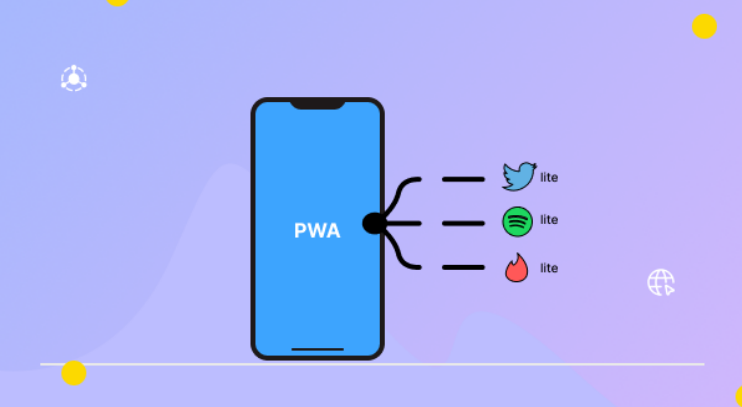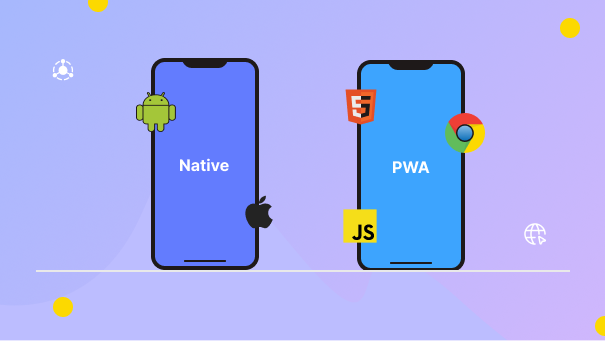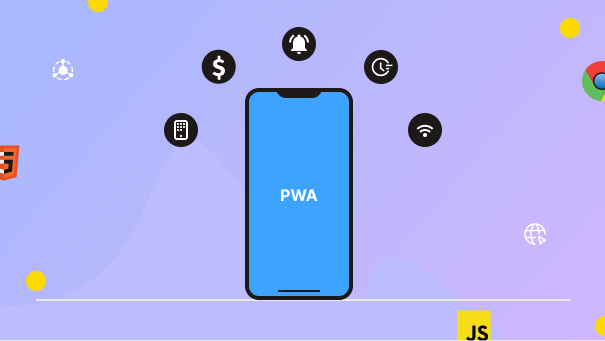
Progressive Web Apps or Native Apps? What Does the Future Look Like Beyond 2022?
Today, it’s safe to say that technology travels faster than light. With smartphones of every range kicking in, usage of the internet, especially in India, is all the way more accessible and affordable. This calls for a rise in developing and designing products with a mobile-first approach.
With every software development company fighting for user retention, it’s the progressive web apps (PWAs) that make it possible and widely acceptable among mobile users and businesses alike. It’s not only mobile-friendly for the users but also pocket-friendly for businesses, given the level of effort and time it demands to build and maintain a native app from the ground up.
It’s not only mobile-friendly for the users but also pocket-friendly for businesses, given the level of effort and time it demands to build and maintain a native app from the ground up.
A Peek Into The Future With Progressive Web Apps
A lot of popular brands are known to have an effective PWA presence that delights customers and also benefits businesses by multi-folds.
To support this with an example- Twitter’s PWA version, Twitter Lite, was successfully able to reduce its bounce rates by 20% and increase its pages per session by a whopping 65%. Similarly, the Flipkart Lite version could re-engage a lot of its dropped users by 40% followed by a 70% conversion rate.

In fact, the list goes on and on about how billion-dollar companies are opting to develop PWA apps to crush the competition with their splendid user experience. The list includes companies like Pinterest, Wikipedia, Telegram, Instagram, and more.
This is all made possible because many barriers that come with native apps are eliminated once moved to PWAs. This puts the power back in the hands of the users and customers to consume content, minimize internet data and keep more internal storage to themselves.
However, the burning question remains the same. Are progressive apps really progressive enough to dominate the software development space in the years to come?
In this blog, we will find out precisely that.
Let’s start with the basics.
What is the Difference Between Native Apps and Progressive Web Apps?

Native apps have a home to go back to. If you can install a certain application on your smartphone via App Store or Google Store, it’s because it is a native app.
It is built from scratch to ensure full utilization of the hardware ecosystem that resides within the operating systems, i.e.- iOS and Android.
This enables the users and customers to have a dedicated place to go to when they wish to use the app without hunting it on the browser. This enhances the app's user experience by multi-layers, making it an intuitive product to get accustomed to.
On the flip side, PWAs are a blend of a responsive web app and a mobile app. It is a replica of how a native app looks but can feel a tad bit different in its usage. But by no means does a PWA rip off the essence of a native application.
Your users and customers can use all the features like they do in a mobile app that you install from your app stores and google stores just as efficiently.
Also, this eliminates one extra step for the user, which is to install the app from its native platform. Rather, one can directly jump onto using the web version of the app without having to go through rounds of steps to use a particular app. It offers your users a near-native app experience without compromising on the user delight spectrum of things.

Reasons to Love PWA’s over Native Apps
Even though both the mobile app development frameworks have their unique set of strengths and weaknesses, there are multiple reasons PWAs become the obvious choice for businesses and users.
i) Exceptional Performance Even In Low Network Conditions
A native app, for the high-maintenance framework it follows, demands a higher bandwidth because it has a lot of heavy lifting to do in order to let users install and use the app smoothly with no hiccups.
However, with PWA, one can easily use the application in a low to poor network area with a low internet speed without affecting their experience and frustrating themselves.
ii) Quick Loading Time & Page Refreshes
Unlike a native app which won’t run effectively without an active and high-speed internet connection, PWA can quickly load pages within a short period.
This lets you do any task at the hand faster without being fearful of redoing the entire thing all over again. Progressive Web Apps are incredibly fast, allowing users to access apps as soon as all the required assets (HTML and CSS) have been downloaded.
iii) PWA Are Small In Size
The average size of an app built using the Android SDK is about 15 MB. An iOS native app can be much larger, though, with some being as large as 38 MB or so. As you might guess, bigger apps are rarer than smaller ones; some heavy apps like Snapchat, Tinder, or PUBG are an exception in this case, which drains the battery levels and exhausts the storage of your smartphones.
But otherwise, unlike native apps, progressive web apps don't take up much space on a user's device, making it a bliss for them to use in their own convenient time.
iv) Enjoy Native App-Like Features
You’ll be amazed at how intuitive and identical web apps are in action like that of a native app. The user experience may vary slightly, but the functionalities and features are something you do not have to compromise on missing out on.
You are still entitled to tasks like offline mode, push notification, adding items to your cart or wishlist, etc. It gets the job done no matter if you are operating an e-commerce website, social media app, or food ordering app.
v) PWA Updates Itself
When you use a progressive web app, updates happen silently in the background. You'll always be using the latest version without even noticing it. And because there's no need for an update button and not every phone has to download updates, your users will save time and keep their data plans happy.
vi) Low Development, Running & Maintenance Costs
For creating a native app, the effort involved to get it built with skilled developers and the turnaround time to get it developed is quite a task. This ties the overall development cost to shoot up.
Also, it becomes extremely crucial for the developers and coders to create a product that’s operating system friendly for its success. Every step in developing a native app comes with a cost. To avoid these overhead costs, PWA comes as a relief to ensure small and medium-sized businesses do not have to go through such hefty investments in building a product.
PWA can run efficiently on the browser. Developing costs go way down as compared to a native app and the turnaround time to make it live decreases by multifold. Plus, the step of testing and deploying the application separately for Android and iOS platforms can be skipped altogether without compromising on its quality, functionality, and accessibility.
vii) Skip The Formalities and Stringent Process Of App Aggregators
When your native apps go live on the App Store and Google store, there are several challenges to overcome. Typically, it takes 3-7 business days for Google Store to make your Android app live after the Google Play Store team reviews and approves your product.
And on the other side of the table comes Apple, which can get hard on you for making any app live on the App Store. Rounding off, it can take about 10 to 30 days until you see your product, ready to install in the store. You’ll have to make sure you go through their iOS app publishing guidelines in detail to avoid any app rejections.
Related Blogs





